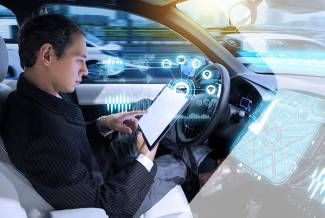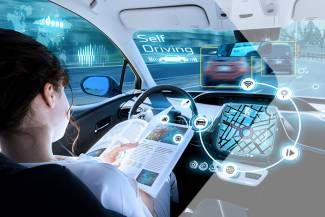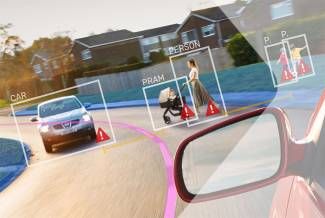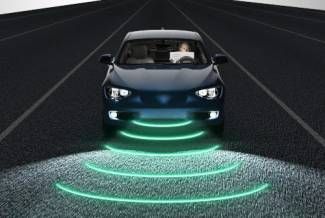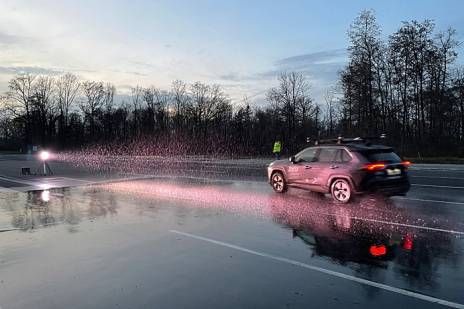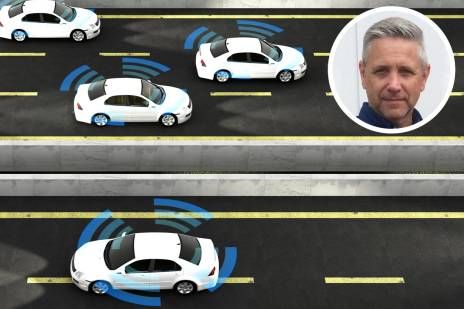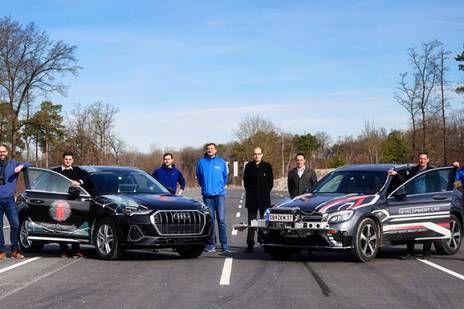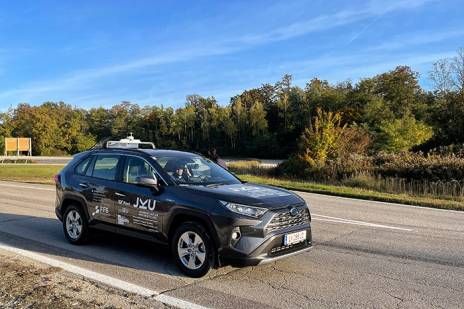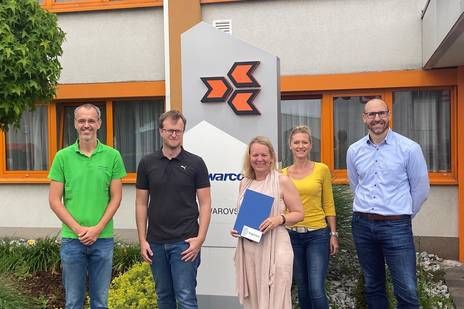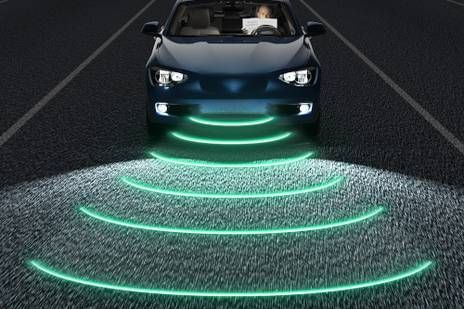Autonomous driving:
About the current state & future of self-driving cars
Autonomous driving – also called automated driving – is a topic that has received a lot of attention in recent years. The idea of cars driving autonomously and thus replacing drivers is both fascinating and frightening for many people. But what exactly does autonomous driving mean? What advantages and challenges does it bring? And how advanced will the technology be in 2023?
On this page you will find clear answers and learn about the current state of the art as well as the future of self-driving cars.
Definition: Autonomous driving
What is autonomous driving? Put simply, it refers to the technological ability of vehicles to overcome challenges on the road without human intervention.
This works by sensors, cameras and artificial intelligence working together to sense the environment as accurately as possible and make the right decisions.
However, there are different levels of autonomous driving, which makes it difficult to give a universally applicable definition: assistance systems such as the lane departure warning system or parking assistant, as well as partially automated systems that still require a hand on the handlebars, are by definition not autonomous.
Is there a universally valid definition?
Yes, there is a universally valid definition of autonomous driving. The Society of Automotive Engineers (SAE) has defined a scale with six levels of autonomous driving – from level 0 (no automation) to level 5 (full automation). In principle, this involves the vehicle's capabilities for perception, decision-making and control.
This definition is used by many experts, governments and authorities worldwide.
Automous Driving: Additonal Information
Current state of the art:
Autonomous driving 2023
Trucks without drivers making their way along the highway, buses taking students on campus to the next lecture without drivers, cars from Tesla, Google (Waymo), Toyota and others that have been driving around in Los Angeles and San Francisco since 2018 – without a driver at the wheel: what is already almost commonplace in the U.S., is still rarely seen in Europe.
Autonomous driving 2023: in Germany (DACH)
In 2023, however, policymakers will once again be giving new momentum to the topic. Since the beginning of 2023, automated vehicles have been allowed to drive at speeds of up to 130 km/h in Germany.
The requirements are:
- The vehicle has a Level 3 permit (more on that in a moment).
- The road must be closed to pedestrians and cyclists.
- The lane in the other direction must be physically demarcated (e.g. guard rail).
- The driving assistance system can be switched off at any time.
- The system must independently inform the driver when to take over.
- The driver must be able to take over within 10 seconds.
These regulations are based on a new UN regulation. Although it is considered a milestone, it only legalizes highly automated driving, not autonomous driving.
To explain briefly: In 2023, the hands may leave the steering wheel, the smartphone may be used, and the attention need not be focused on the road – provided the driver can take over control within 10 seconds.
Good to know: Mercedes-Benz is the first German car manufacturer to receive approval for a "Level 3 vehicle" – and also the first worldwide. Level 3 is synonymous with highly automated: The car is allowed to drive, steer, brake, etc. autonomously, but the driver must be capable of taking the wheel again within a few seconds (according to the UN: 10 seconds!). So, of course, the driver is still liable for any damage.
Autonomous driving worldwide in 2023
In general, it can be said that autonomous vehicles have made great progress recently. There are already a number of partially to fully autonomous vehicles on the market worldwide that – at least on a test basis – get from A to B without a driver and perform logistical tasks.
Partially autonomous assistance systems, such as for parking or keeping in lane, will actually be standard on new cars in 2023. Fully autonomous vehicles that function without human intervention are still rare, but increasingly on the rise, as these examples show:
Waymo
Waymo is a subsidiary of Alphabet (Google) and operates a commercial robotaxi service in Phoenix (Arizona) that can drive fully autonomously: The vehicles are Level 4 and can therefore drive without human intervention.
Tesla
Tesla offers semi-autonomous vehicles equipped with the so-called autopilot system. These vehicles can drive independently on the highway, but must be monitored by a human driver. The company has already tested thousands of vehicles and has set itself the goal of bringing fully autonomous vehicles to market by 2025.
Cruise
Cruise is a subsidiary of General Motors and operates a robotic cab service in San Francisco. The vehicles are Level 4 and can drive without human intervention. The company has already tested several thousand autonomous vehicles on the streets of San Francisco and plans to expand its service to other cities in the US in the coming years.
Baidu
Baidu is a Chinese company working on autonomous vehicles. The company has already tested some autonomous vehicles on the roads in China. Baidu's goal is to put one million autonomous vehicles on China's roads by 2025.
Volvo
Volvo has launched its first Level 4 autonomous vehicle in 2022. The autonomous vehicles will initially be deployed in selected cities before being gradually rolled out to other regions. Volvo's goal is to equip one-third of its vehicles sold with autonomous Level 3 & Level 4 technology by 2025.
Good to know: These examples show that autonomous vehicles are already being tested and deployed in various countries around the world. However, fully autonomous vehicles are not yet widespread and there are still many challenges to overcome before they can be deployed on a large scale. It will still take some time.
Further topics around autonomous driving
In the near future we will provide links for detailed information on the following specific topics:
Related Stories
How it works: autonomous driving comes in stages
Autonomous vehicles will shape and revolutionize mobility in the future. But this development will not come overnight; it is a process.
According to unanimous expert opinion, the path toward automated driving will proceed in several stages. In summary, the most important 4 steps are:
- Step: assisted driving (e.g. parking or lane assist)
- Step: partially automated driving (hand remains on the handlebar)
- Step: highly automated driving (hands-free driving possible to a limited extent)
- Step: autonomous driving (vehicle drives independently)
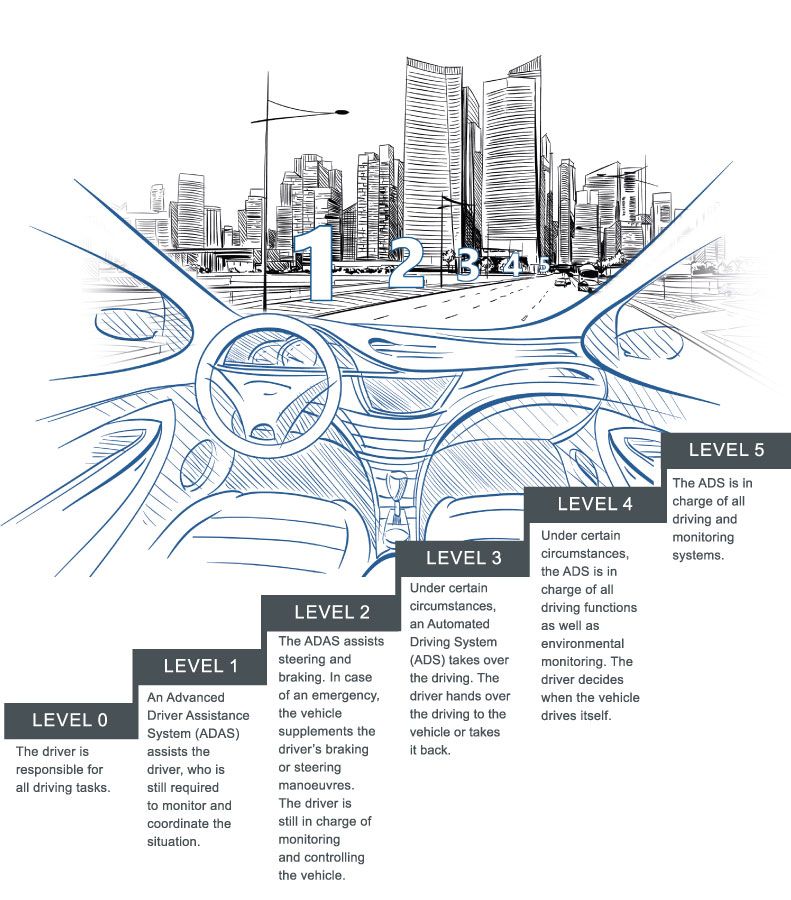
Good to know: The road to autonomous driving is a gradual one. Some experts speak of six, others of four stages or levels. But no matter how you look at it: Each level of this development means more time, more safety and more environmental protection for drivers. The technology is evolving practically every day – so its disruption is only a matter of time.
Road markings and systems for autonomous driving
Good road markings are essential for autonomous driving to succeed, as they provide important guidance for motorists, pedestrians and cyclists:
- Road markings are the critical element for road safety and will play an important role in the phased rollout.
- Automation levels from the Society of Automotive Engineers (SAE) and the U.S. Department of Transportation show that road markings will become even more important as more automated vehicles are deployed.
Good to know: Proper installation and maintenance of markings are essential, as they are detected by automated vehicle systems and serve as a guide to steer the vehicle.
Learn more:
Source: ZDF (3sat/nano/Rasmus Raecke/Silke Cronauer/authors' collective)
Benefits of automated driving: What will be better?
There are many potential benefits of autonomous driving that can impact different areas. Here we briefly list some of the most important benefits:
Greater safety: Autonomous vehicles can help to significantly reduce the number of traffic accidents, since 90% of all car accidents to date have been caused by human error. Autonomous vehicles are able to react faster and more precisely to traffic situations.
More convenient: Autonomous vehicles can increase driving comfort by relieving the driver of the responsibility of driving. This allows occupants to relax, work or entertain themselves while the vehicle takes them to their destination.
Greater efficiency: Autonomous vehicles can improve traffic flow and increase road capacity utilization because they are able to communicate with each other (Car2x communication) and coordinate. This can reduce travel times and lead to lower fuel or energy consumption.
Greater accessibility: autonomous vehicles can enable people with physical limitations or disabilities to be mobile without relying on the assistance of others.
Gentler on the environment: Autonomous vehicles can help reduce CO₂ emissions because they are able to drive more efficiently. Parking autonomous vehicles will be outside the city, leaving more room for green spaces, bike lanes, etc. All of this can help improve air quality in urban areas.
Good to know: Fewer parking spaces, more green areas, lower emissions, increased efficiency and, above all, greater safety. These benefits can help make transportation more environmentally friendly and life in big cities more pleasant.
Which challenges must be overcome?
The introduction of fully autonomous vehicles – Level 5! – is likely to take some time, as the development is very complex and poses many technical challenges. In addition, policymakers and society will face new legal and ethical issues that must be carefully resolved.
We have briefly summarized the biggest challenges here:
Technology: The development of the necessary technology for fully autonomous vehicles is complex. Many technical hurdles still need to be overcome, such as improving sensors and cameras, developing algorithms for decision making & integrating the systems into the infrastructure
Regulation: The introduction of autonomous vehicles will require an overhaul of existing traffic regulations to ensure that the vehicles can be operated safely and responsibly.
Legislation: The introduction of autonomous vehicles raises numerous legal issues, particularly with regard to liability in the event of accidents.
Ethics: Ethical issues arise, particularly with regard to the decisions made by vehicles in emergency situations. Ethical standards must be developed – standards that are in harmony with the values of society.
Acceptance: The acceptance of autonomous vehicles by the public and consumers is an important factor for the success of the technology. There are still many concerns about safety, liability, privacy, security, and more.
Infrastructure: The introduction of autonomous vehicles also requires the development of a corresponding infrastructure, such as intelligent traffic control systems that can communicate with the autonomous vehicles (Car2x communication).
Costs: The development and introduction of autonomous vehicles is very costly and requires investments in research and development, production and infrastructure. Politics and business will have to join hands here.
Good to know: Although there are still many challenges, companies and governments around the world are working to overcome them and drive the adoption of autonomous vehicles.
When will autonomous driving arrive?
There are indeed various forecasts and annual figures on when autonomous driving will finally become a reality. It is difficult to give an exact time, as this depends on many factors, such as technological development as well as consumer acceptance.
Here we give a few serious forecasts:
- The Boston Consulting Group predicts that around a quarter of all new cars sold will be fully autonomous by 2035.
- A study by IHS Markit predicts that by 2040 there will be around 35 million autonomous vehicles on the road, accounting for a quarter of all new car purchases.
- A study by Roland Berger predicts that approximately 25 percent of all new cars sold will be able to drive autonomously by 2030.
- McKinsey predicts that by 2035, around one in three vehicles will be equipped with Level 3 driving assistance systems.
- According to a study by the German automobile club ADAC, it will be slower to catch on than expected. The reason: cars are in use for up to 20 years on average.
Good to know: It is important to note that such forecasts are based on current developments and trends and may well change over time.
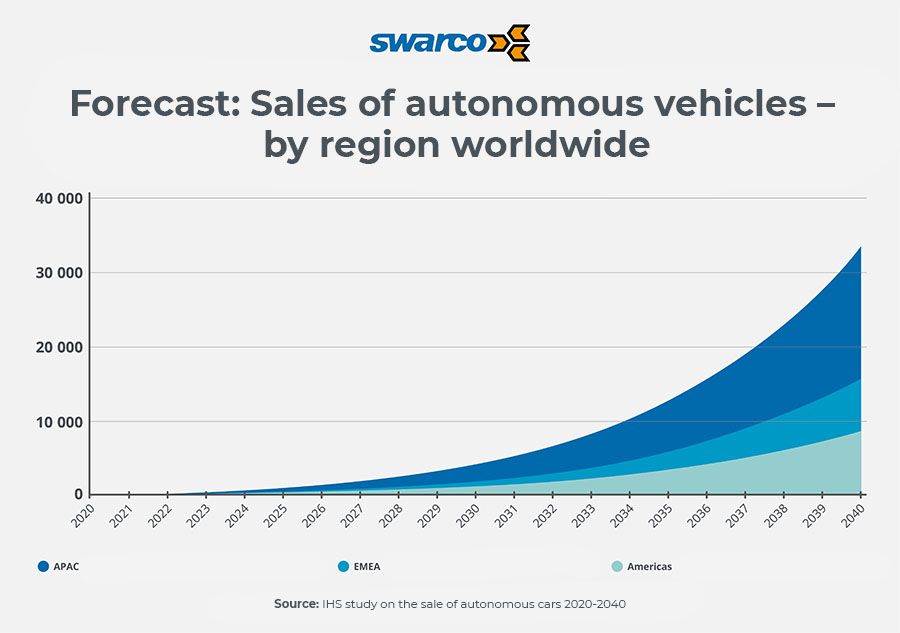
Of course, this is only a forecast: However, if the technology holds its ground, exponential growth – as with other disruptive technologies – is not unlikely.
Conclusion:
Autonomous driving 2023 & in the future
Exactly when may still be unclear today, but there is no question that autonomous driving will come. Many car manufacturers have recently announced that they will be launching autonomous vehicles on the market in the next decade. So we can expect to see autonomous cars on the roads more frequently in the next 10 to 15 years.
There are many benefits and in the long term it will lead to greater safety, more convenience and also more freedom. It will be interesting to see how this technology develops over the next few years and how it will change the way we travel and live.
Last but not least: Autonomous driving will become a reality and bring many benefits: It can increase road safety, improve traffic flow and give more freedom to people with limited mobility. However, there are also challenges such as legal and ethical issues of liability, data protection and cybersecurity that need to be carefully addressed to ensure the technology's many opportunities are ultimately successful.
FAQ
Autonomous driving is, simply put, the technological ability of motorized vehicles to master all road traffic challenges independently (autonomously) - i.e. without human intervention. Steering wheel, pedals, gearshift, etc. thus become superfluous.
Autonomous driving works with sensors, cameras, GPS and artificial intelligence. These technologies enable an autonomous vehicle to accurately sense its surroundings, recognize traffic situations and make decisions.
The Society of Automotive Engineers (SAE) has defined a universally accepted, internationally recognized scale of six stages or levels of autonomous driving as follows:
- Level 0: no automation
- Level 1: Assistance system (e.g. cruise control)
- Level 2: Partial automation (e.g. lane departure warning)
- Level 3: Conditional automation (constant intervention required)
- Level 4: High automation (certain driving situations possible without driver)
- Level 5: Full automation (all driving situations without driver)
Autonomous driving is already partially available in some countries. However, widespread introduction will still take some time and depends on many factors – from the technology to human acceptance.
In Germany, Austria and Switzerland, autonomous vehicles with up to Level 3 are already allowed to drive, but there are still many restrictions. Currently, only certain test areas, test routes and special permits are permitted for autonomous vehicles.
Yes. Since 2023, automated vehicles have been allowed to drive at speeds of up to 130 km/h. This increased speed limit is based on a UN regulation of the World Forum for Harmonization of Vehicle Regulations of the UN Economic Commission for Europe (UNECE). However, some restrictions apply (see above).
The main benefits of autonomous driving are:
- Greater safety
- Lower emissions
- Increased efficiency
Even minor errors in the software can lead to traffic accidents. In addition, autonomous vehicles must be able to make ethical decisions, such as whether to avoid an accident or endanger a pedestrian in an emergency situation. All problems that have yet to be solved.
The mobility of the future lies in digitalization: Big Data, 5G, artificial intelligence and more connectivity increase safety, improve efficiency and reduce environmental impact. The resulting mobility concepts are setting profound changes in motion.

STAY INFORMED
GET OUR NEWSLETTER!
Subscribe to our ITS / Smart Mobility Newsletter and receive regular updates on trends, developments, solutions and events.
